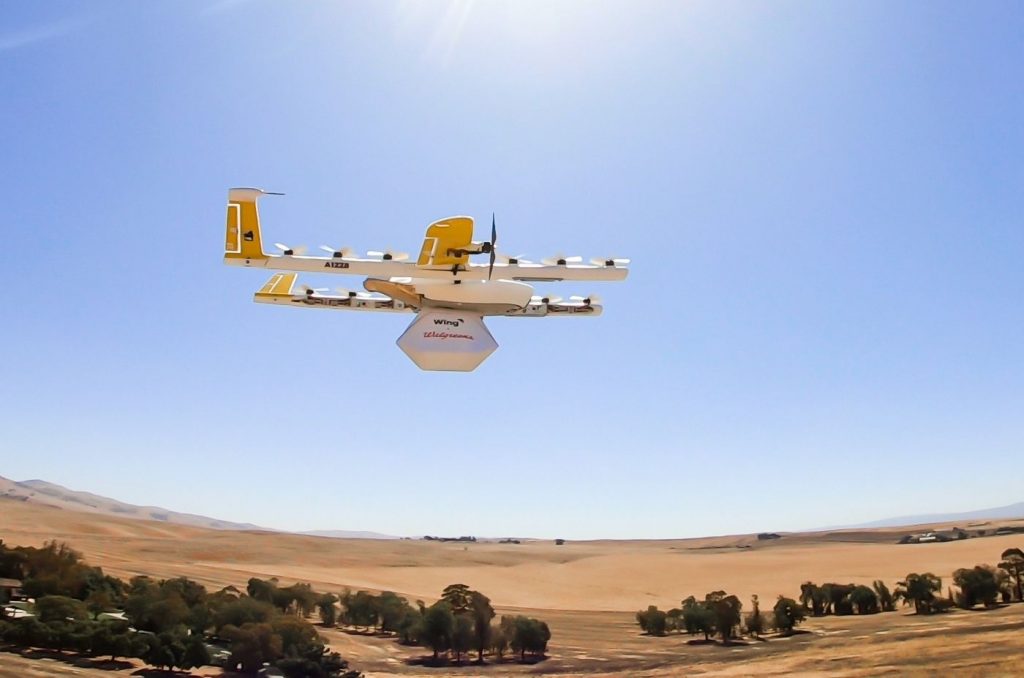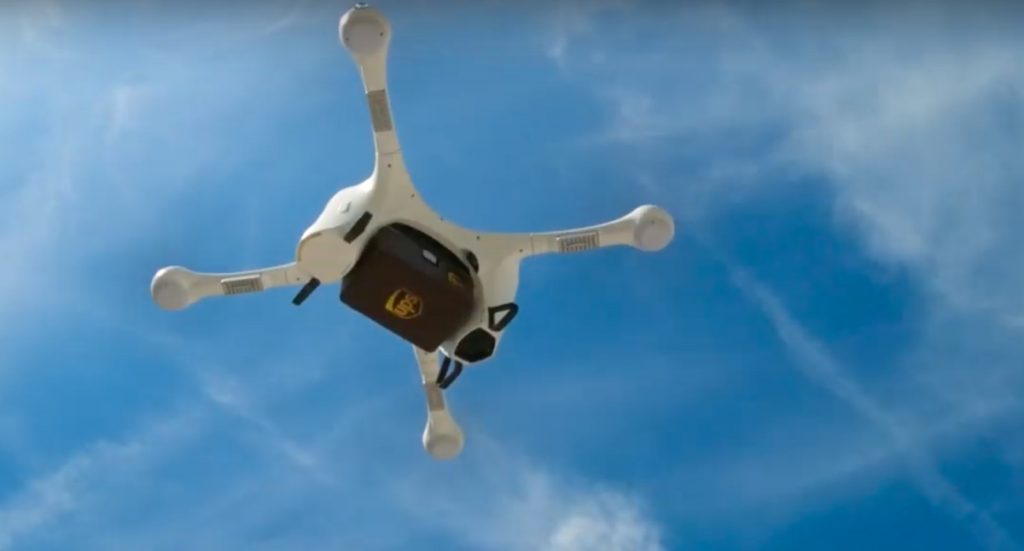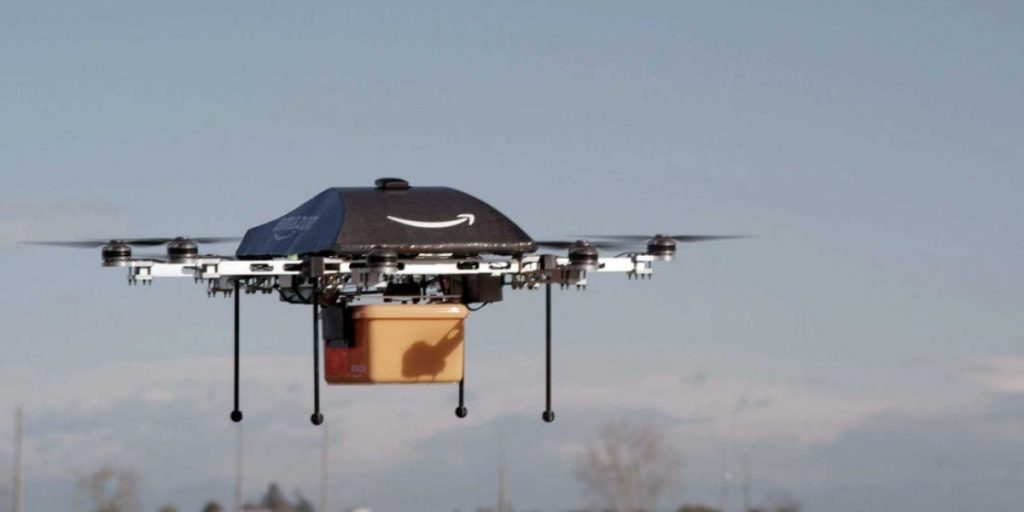Aquiline Drones Takes Novel Path to Part 135 Certification
BY Zacc Dukowitz
12 March 2020Aquiline Drones has recently been making headlines as being “the fourth company to operate under an FAA 135 Air Carrier Certificate,” with the other three being Alphabet’s Wing, UPS’ Flight Forward, and Amazon’s Prime Air.
And with good reason.
According to the FAA, Part 135 is now “the only path for small drones to carry the property of another for compensation beyond visual line of sight”—which means that, if you want to do drone delivery in the U.S., you must have Part 135 certification.
However, according to our research, only Wing and Flight Forward have actually been granted Part 135 certificates. (See the last three paragraphs of this page on the FAA’s website for more information.)

Photo credit: Aquiline Drones
But what we find interesting isn’t whether Aquiline Drones and Prime Air actually hold Part 135s—all signs indicate that they probably will soon—but rather the way that Aquiline Drones is going about acquiring its Part 135 certificate.
It looks like Aquiline may have found a way to bypass the FAA’s rigorous Five-Phase Part 135 certification process by acquiring a company that already has a Part 135.
We are finalizing the purchase of a small airline, making us one of four drone airline companies in the US operating under an FAA 135 Air Carrier Certificate.
– Barry Alexander, CEO and Co-Founder of Aquiline Drones
Aquiline Drones’ Novel Path to a Part 135 Certificate
Part 135 certificates were not invented for the drone industry. When you look at the FAA’s page devoted to the Part 135 certification process, you’ll notice that drones are not mentioned anywhere.
Historically, Part 135 certificates have been used to certify smaller airlines, like those that do charter flights, to conduct flights for hire.
The addition of package delivery by drone as a type of operation permitted under a Part 135 certificate is a solution to the regulatory mess of asking companies to obtain several different waivers—BVLOS, night flying, flying over people, and so on—for one kind of operation (i.e., drone delivery).

Photo credit: Wing
Although the Part 135 certification process wasn’t created just for drone companies, the FAA has adapted it for drone operations by “granting exemptions for rules that don’t apply to drones, such as the requirement to carry the flight manuals on board the aircraft.”
Up to this point, the two drone companies that have obtained a Part 135 certificate have gone through the certification process from the beginning, leading many in the drone industry to dub them “drone airlines.” Similarly, Amazon Prime Air is also in the process of going through this process from the beginning.
But it looks like Aquiline Drones may have found a way around the certification process by acquiring a charter airline that already holds a Part 135. And, if so, this is a significant first.
If, in fact, Aquiline has been able to meet the FAA’s rigorous safety requirements in an expedited manner by purchasing a company that already holds a Part 135 certificate, then this path could provide a new, quicker model for opening up drone delivery in the U.S.
We’ll certainly be interested to learn more about Aquiline’s Part 135, and to see them and the other companies in the Part 135 pipeline start to use their certificates to launch real, fully operational drone delivery programs in cities throughout the U.S.
[Related Reading: Regular Drone Deliveries Underway in Christiansburg, VA with Wing]
Four Types of Part 135 Certification
Although a Part 135 certificate allows drone companies to make package deliveries by drone, not all Part 135 certificates are the same.
While Wing has what is called a Single Pilot Part 135, which means that only one pilot is allowed to operate, Flight Forward has a Standard Part 135, which means that there are no limits on the number of pilots or the size and scope of operations.
This is a huge difference.
Since Wing is limited to one pilot it can only conduct deliveries in one location within a limited period of time.
On the other hand, Flight Forward could hypothetically start drone delivery services all over the U.S., running big delivery operations with multiple pilots at multiple locations, 24/7.

Photo credit: UPS
In addition to the Single Pilot and Standard Part 135 certificates, there are two other types.
Here are all four:
- Single Pilot—A single Pilot operator is a Part 135 certificate holder that is limited to using only one pilot for all part 135 operations.
- Single Pilot in Command—A Single Pilot in Command Part 135 certificate is a limited part 135 certificate. It includes one pilot in command (PIC) certificate holder and three second PICs. This type of Part 135 certificate also has limitations on the size of the aircraft and the scope of the operations.
- Basic Operator—A Basic Operator Part 135 certificate provides limitations to the size and scope of operations. It allows for a maximum of five pilots (including any second PICs) and five aircraft.
- Standard—A Standard Operator Part 135 certificate has no limits on the size or scope of operations.
Learn more about Part 135 certification for drone companies on the FAA’s website.
Certify the Drone, Not the Company
At the beginning of this article, we quoted the FAA as saying that the Part 135 certificate process is the only path for companies to get permission to conduct drone deliveries in the U.S.
But that may soon change.
As the debate over the FAA’s proposed rules on Remote ID raged recently, another rule that could provide a streamlined regulatory path for drone delivery quietly went through its own comment period.

Photo credit: Amazon Prime Air
Both of these rules were subject to the NPRM (Notice of Public Rule Making) process, which means they had to be left open to public comment. While the Remote ID NPRM received over 50,000 comments, the drone certification NPRM only got a total of 66.
Despite the small number of comments, the drone certification NPRM is potentially revolutionary. The rule contains a general proposal that would make it possible for drones to be certified for specific types of operations, with drone delivery clearly top of mind.
Under the NPRM, it appears that a drone delivery company would not need special permission to conduct drone deliveries. Instead, the company would only have to use drones certified for deliveries (as well as meet relevant Part 107 requirements, like using a drone pilot that holds a Remote Pilot Airman’s Certificate).
The drone certification NPRM does not lay out actual proposals for certifying drones for specific operations, but only proposes the general idea of certifying drones for various operations, with delivery used as one example.
However, it does look like there might eventually be two paths to drone delivery—via a Part 135 certificate or via using a drone certified for delivery.
What do you think—does the future look bright for drone delivery or do we still have a lot of hurdles yet to overcome? Hop into this thread on the UAV Coach community forum to share your thoughts.


